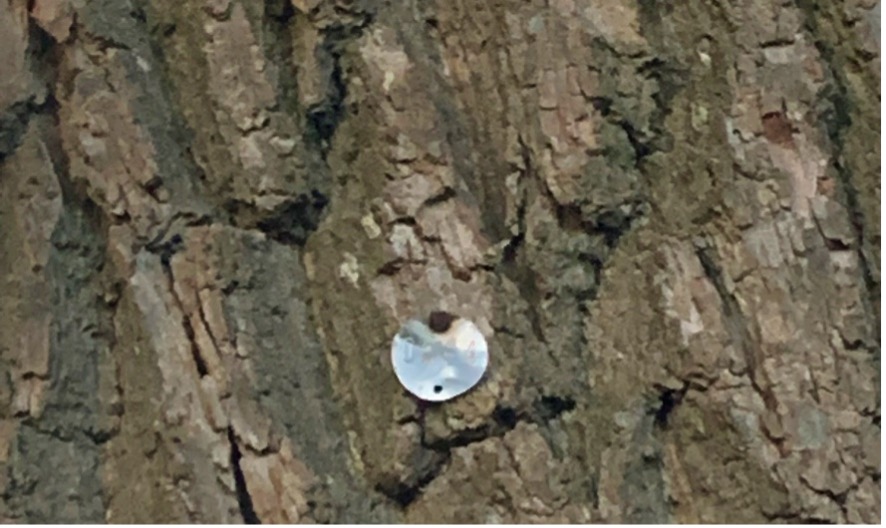Thoughts on the challenges of leading RE
01 July, 2024, Neil Duncalf
I was out taking the dog for a walk around the village the other day when I noticed that one of the oak trees on the back lane was tagged. It was only a small metal disk nailed to the tree’s trunk, but it was there to show that it was a protected tree subject to a preservation order.

When I thought about the tree later that evening, I began to think about our role as teaching practitioners in protecting and preserving our subject in the face of the challenges education can throw at us. How can we effectively achieve this?
We need to “shout” about how important our subject is and it’s role in the school curriculum. It is not just the senior leadership team that need to hear the message but so should the school governors, the pupils and their parents. I’m not suggesting that it’s easy or that it does not need some careful planning and thought but there are some good starting points.
Firstly, make sure your RE curriculum is both progressive, engaging and stretches pupils’ learning. This is important to ensure long term pupil engagement. Help to develop the pupil voice in RE by providing ample opportunities for discussions and debates; not every lesson needs to include written work. Consider using visual evidence of pupil engagement, photographs can say a lot more than books filled with worksheets. Talking of visuals, a good way to demonstrate RE’s importance is to carry out a human mind map. This something I have used regularly at the start of each academic year. I have an A4 visual for each of the subjects on the school curriculum and I ask for a volunteer at the start explaining that the role requires someone who is very strong; I give this pupil the visual for RE. Another pupil holds up one of the subjects and the group discuss any links they can think of, once they have suggested two or three links then a string is held between them linking them together. The discussions continue in this way until all the subjects have been linked to RE. Videoing the activity with an iPad helps with the summing up at the end. Some subjects are easier to link than others; for example, history can be linked to RE because historical facts play an important role in religions. Other subjects are harder for example, physical education but with a little prompting pupils suggest things such as the issue of athletes wearing hijabs.
Some of you might think I’ve gone slightly mad, but it is a good idea to volunteer a lesson during the next round of lesson observations. As well as making sure that the lesson has plenty of evidence that meets any lesson observation briefing but include opportunities to address common misunderstandings and misconceptions. Let the pupils show that they are making links in their learning and don’t be afraid if the observer wants to talk to them. You already know that they are fully engaged and committed to their learning in your lessons. The observer will leave your lesson feeling very positive about RE and will share their thoughts with other colleagues.
Invite school governors to join one of your lessons or to observe a whole school RE activity. In my experience both as a teacher and a school governor, governors like to take advantage of opportunities to observe and learn about what goes on in our lessons. If this is not possible then volunteer to talk to the governor’s curriculum sub committee about the RE curriculum and how it strengthens the other subjects. If you can get the pupil voice and their positive thoughts on RE then so much the better. Make sure governors understand the non- academic role of RE in helping to develop pupil’s understanding and tolerance towards other peoples beliefs and how this helps them to develop their ability to be effective members of the community.
If there is a local RE Hub in your area, then make sure you join it. They are a wealth of knowledge, experience and ideas. My own local hub is called the “Pathways RE Hub,” the founding members came up with the name early and it simply stands for the “Pinch and tweak hub,” where ideas are shared and tweaked to an individual school’s need. Hubs also offer fantastic opportunities for networking and informal CPD. My other suggestion linked to hubs is to offer to host a meeting within your own school. Don’t forget to invite senior leadership and a governor or two!
As a final thought, if you are new to leading RE then in addition to joining your local hub, consider the RE Quality Mark. It can offer an excellent and effective framework for you to develop your leadership of the subject against. When you gain the quality mark whether it is bronze, silver or gold then you will have a very visual acknowledgement of how effective your RE faculty is, in the form of the certificate which can be displayed prominently for all to see.